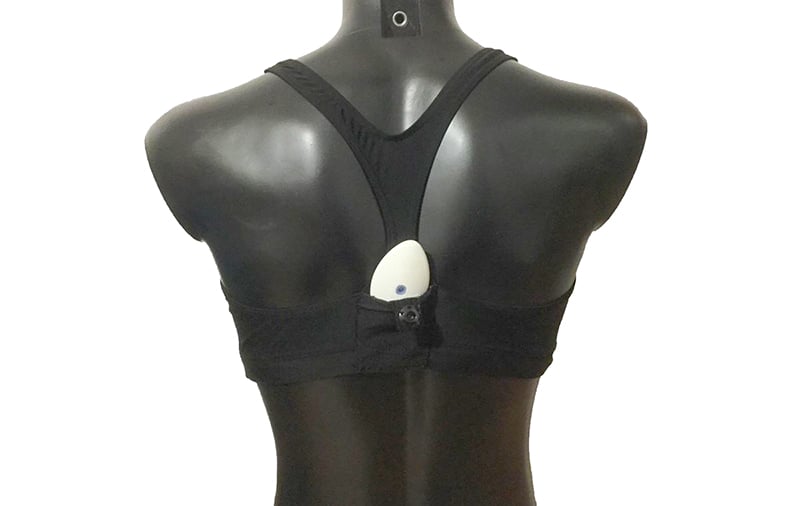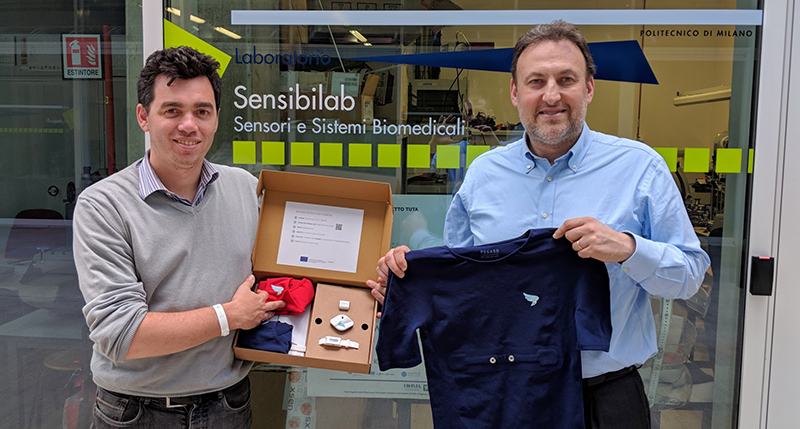When researchers at Italy’s SensibiLab were testing their latest wearable biosensor technology, comfort was critical. A big, bulky prototype wasn’t an option. They had to get their prototypes as close as possible to what they envisioned the final design would look and feel like.
They also needed an affordable solution; some way to get a wide variety of detailed prototype parts in materials ranging from flexible to stress-resistant. The solution they found was a 3D printer from Formlabs.
In-Lab Part Production for Faster Iterations

Too often, researchers make do with prototypes that are heavier, larger, or less aesthetically appealing than desired because of the high cost of custom producing a small run of plastic components.
Desktop 3D printing is changing this with affordable and easy-to-use technology that produces strong and intricate parts in a range of materials. Priced in between hobby printers and industrial printers, the “prosumer” range of machines is growing rapidly. Formlabs’ liquid resin desktop 3D printer was one of the first to deliver high-resolution printed parts for professionals at a fraction of the cost and footprint of industrial 3D printers.
Multiple Prototype Parts From One Machine
In Italy, at the home of SensibiLab within design department of Politecnico di Milano (the Polytechnic University of Milan), research into the smart rehabilitation suit promises to revolutionize wearable sensor technology for biomedicine. Wearable tech is a competitive field. It’s expected to become a $57 billion market by 2025, which makes speed-to-market paramount for the next great innovation. So when SensibiLab’s chief bioengineer Giuseppe Andreoni needed both sleek and sturdy battery pack covers, and soft and flexible sensors to conduct field tests on more than a dozen models, he thought he’d 3D print them.
The university’s consumer-grade FDM printer, however, wasn’t up to the task. The prints lacked fine detail and tended to break under stress. Turning to a 3D printing service bureau resulted in better parts, but at $300 each, they were not an affordable solution. Then a colleague mentioned Formlabs.
Many Reasons to Need Multiple Resins

“Formlabs was one of the only printers where we could print with a variety of materials,” says Dr. Perego Paolo, SensibiLab’s engineer in charge of digital manufacturing. “We have nearly the entire library of Formlabs resins, which include biocompatible materials.”
The costs of the printer, at just under $5,000, fit the company’s budget. “If we had all of our parts custom made, it would have been two or three times the cost of the printer,” says Perego.
SensibiLab prints daily and goes through about a liter and a half of resin a month printing a wide variety of components in a range of materials getting closer and closer to their final product. The company’s wearables are almost ready for commercialization and, like most commercial products, the final parts won’t be 3D printed. “To mass produce these products, you would injection mold them,” says Perego. The same digital design files used to 3D print the prototypes will be used to make the final molds for mass production.
Whether 3D printed or molded, prototype or final product, SensibiLab’s wearables will look and perform the same, which is a big advantage when it comes to attracting companies to license their inventions.


License: The text of "Case Study: Better Research Prototypes with 3D Printing" by All3DP Pro is licensed under a Creative Commons Attribution 4.0 International License.
